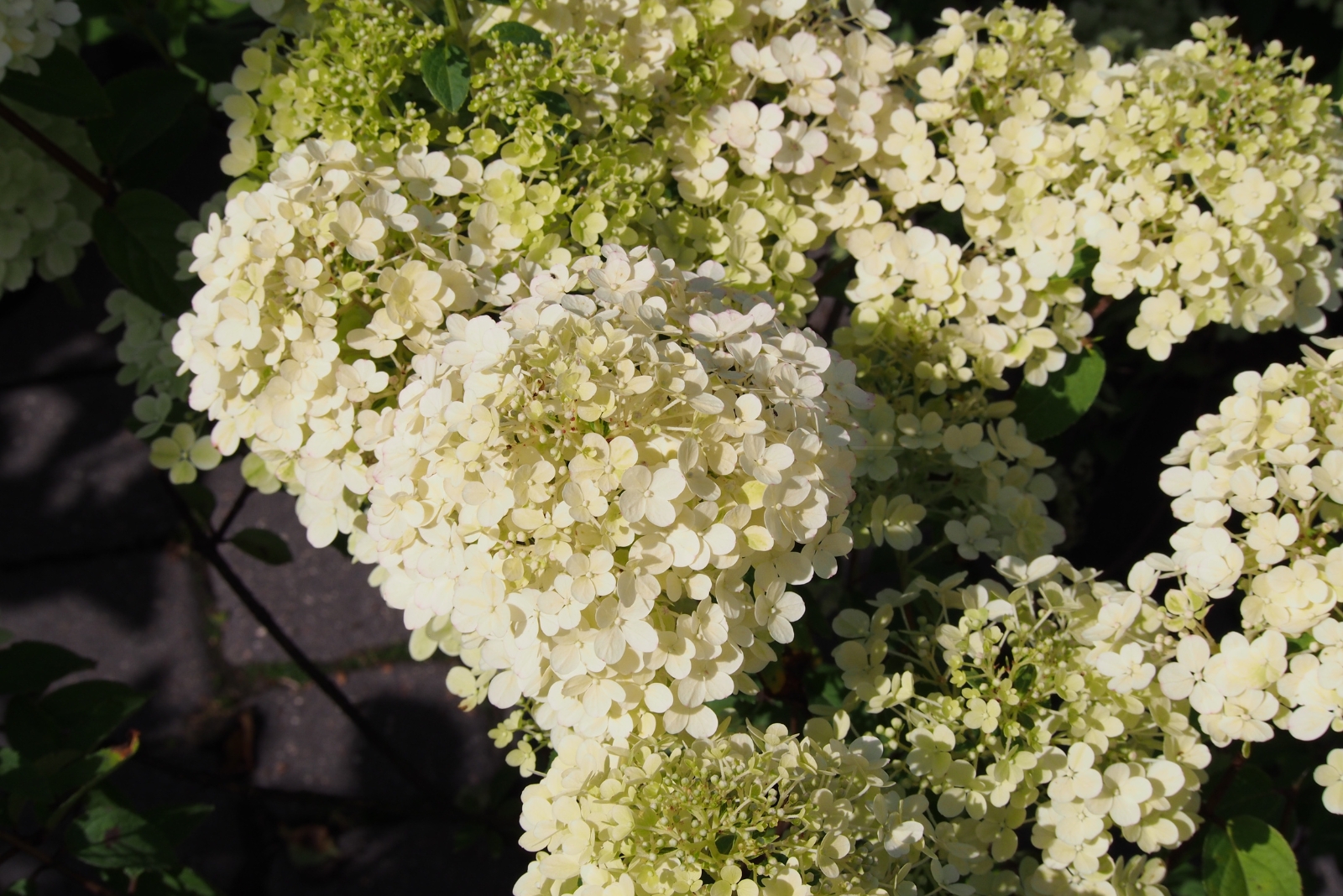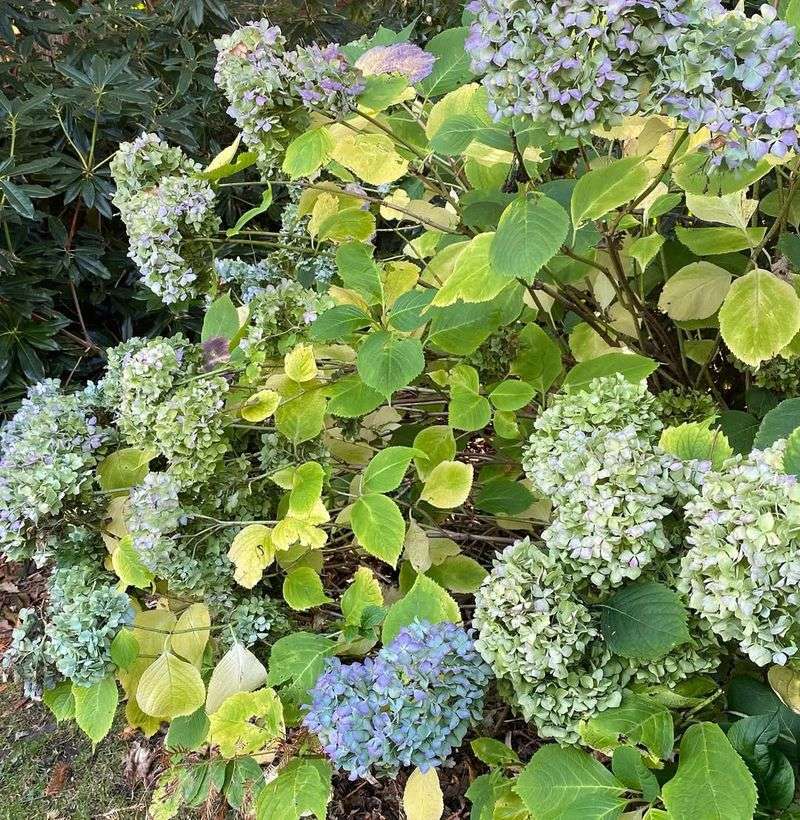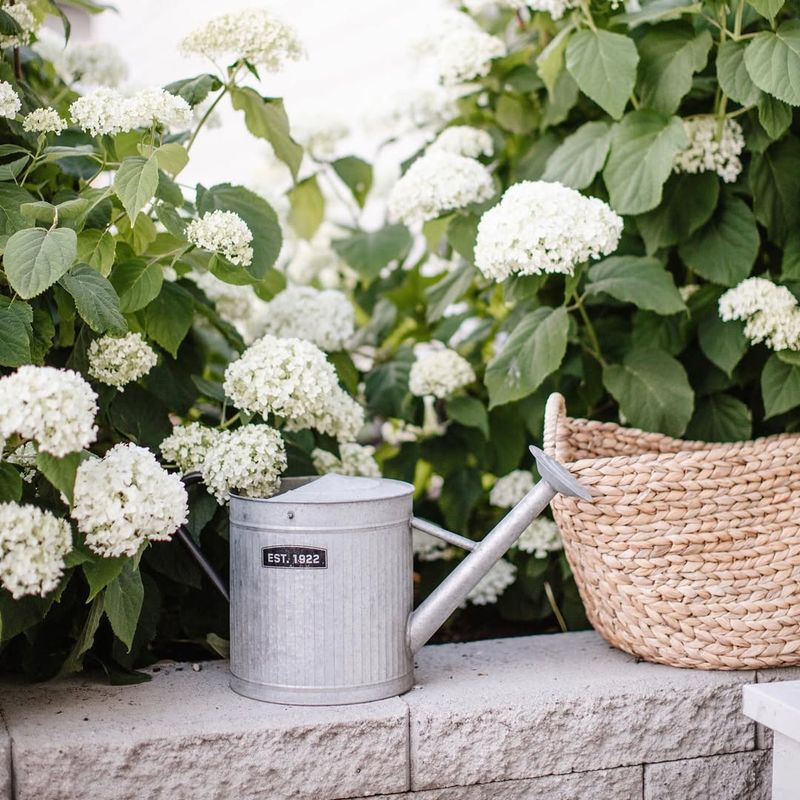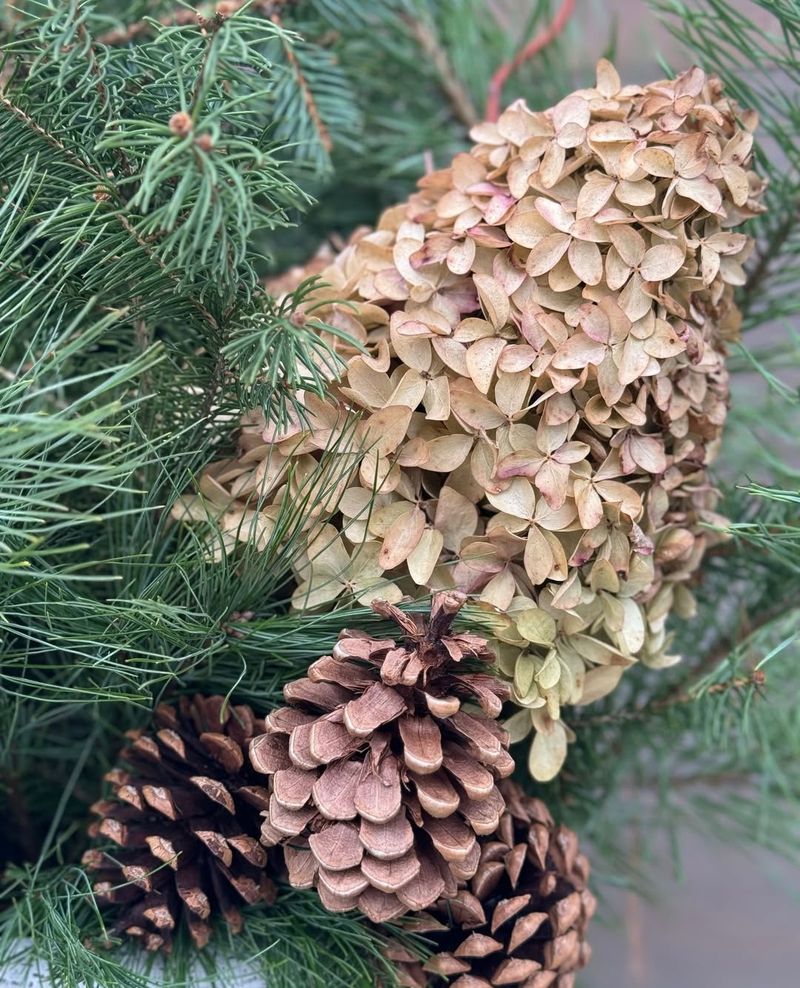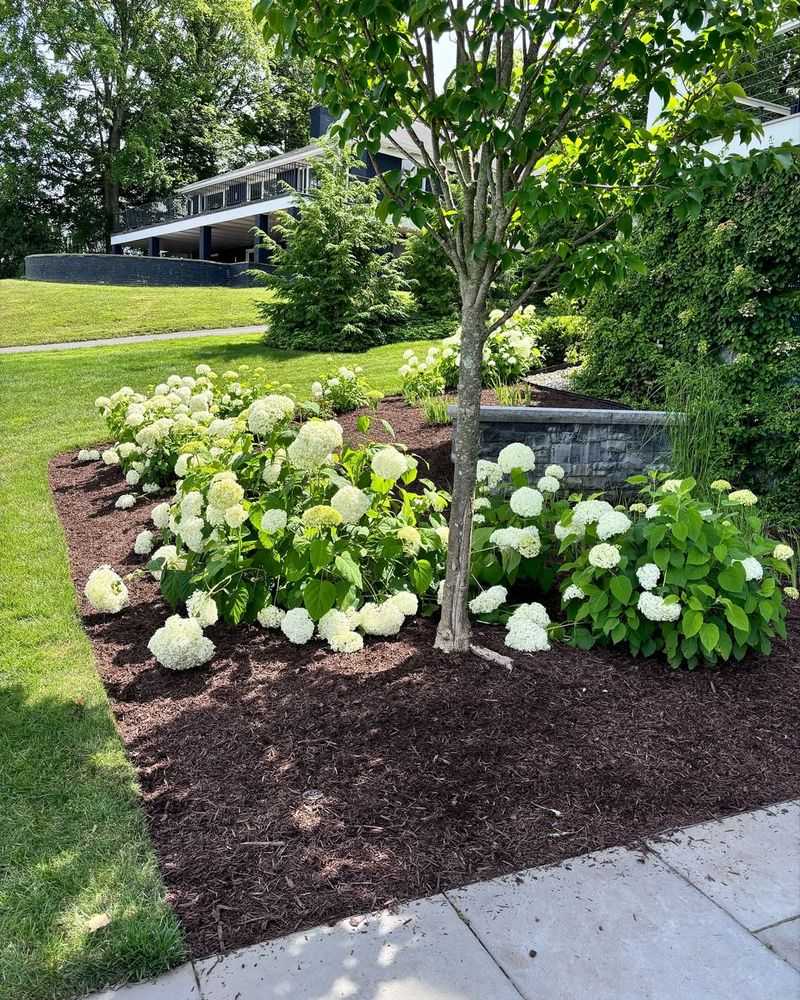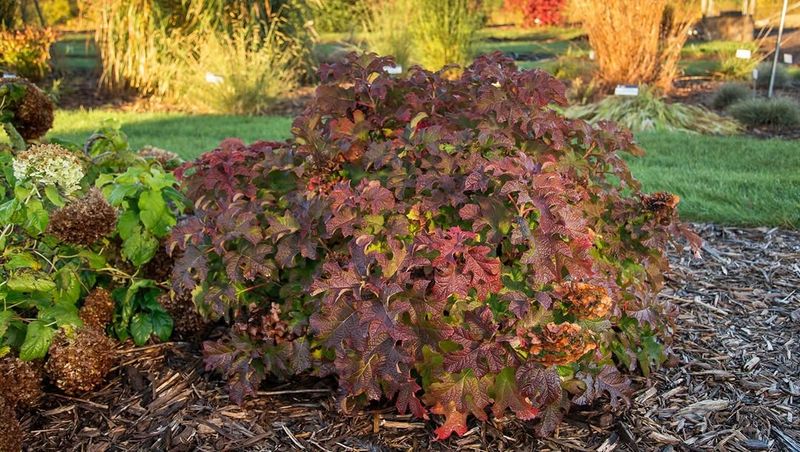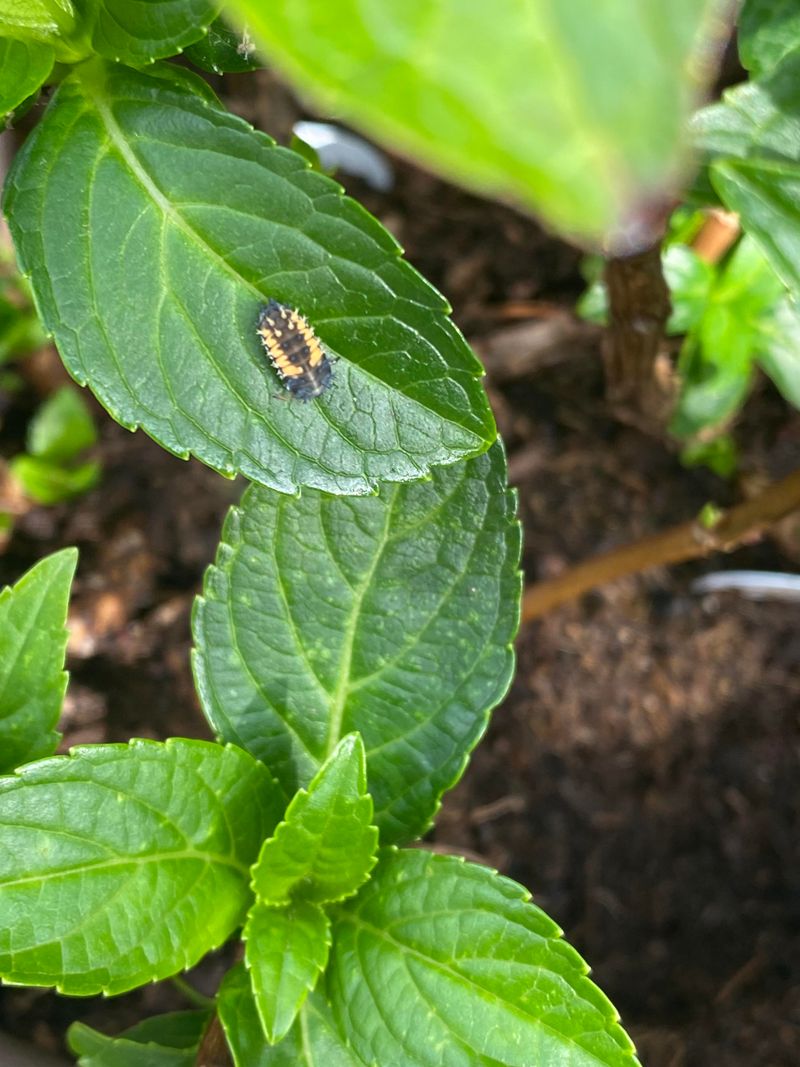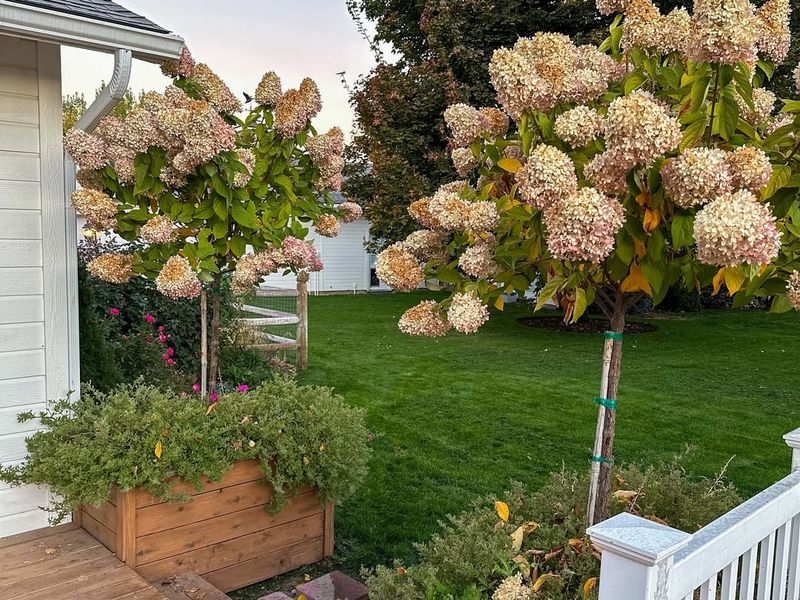October brings cooler temperatures and shorter days to Michigan, signaling an important time for hydrangea owners. Your beautiful blooms need special attention right now to survive the harsh winter ahead and return even stronger next spring.
Following these essential steps will protect your plants and ensure they thrive for years to come.
1. Stop Fertilizing Your Plants Immediately
Fertilizer encourages new growth, which sounds great until winter hits Michigan. Any tender new shoots that develop now won’t have time to harden off before freezing temperatures arrive.
That soft growth will die back quickly when frost comes, potentially damaging the entire plant. Your hydrangeas need to enter dormancy naturally without the push from extra nutrients.
Put away those fertilizer bags until spring returns and temperatures warm up again consistently.
2. Water Deeply Before The Ground Freezes
Hydrated roots survive winter cold much better than dry ones. Plants lose moisture through their branches even during winter months, and frozen ground prevents them from drawing up water when they need it.
Give your hydrangeas a thorough soaking now while the soil can still absorb it. Focus the water at the base, letting it soak down to reach the deeper root zone.
Plan to water again if Michigan experiences a dry spell before the first hard freeze arrives.
3. Leave Faded Blooms On The Branches
Those brown, papery flower heads might look messy, but they serve an important purpose through winter. Dead blooms act as natural insulation, protecting the buds underneath from harsh winds and temperature swings.
Many Michigan gardeners feel tempted to tidy up their gardens before winter, but resist that urge with hydrangeas. The dried flowers also create visual interest in your winter landscape, catching snow and frost beautifully.
Save your pruning shears for spring when new growth begins emerging.
4. Apply A Thick Layer Of Mulch
Root protection makes the difference between plants that bounce back and those that struggle come spring. Spread a generous layer of organic mulch around each hydrangea, aiming for about four inches deep.
Wood chips, shredded bark, or compost all work wonderfully to insulate roots from temperature extremes. Keep mulch a few inches away from the main stems to prevent rot and discourage mice from nesting there.
This protective blanket moderates soil temperature and retains precious moisture throughout winter months.
5. Protect Sensitive Varieties With Burlap
Bigleaf and oakleaf hydrangeas need extra protection because they bloom on old wood from last year. Michigan winters can kill those precious flower buds if temperatures drop too severely or winds blow too harshly.
Create a simple windbreak by wrapping burlap around stakes placed in a circle around the plant. Avoid wrapping the plant too tightly, as air circulation prevents disease.
Smooth hydrangeas and panicle types handle cold better and typically don’t require this extra step.
6. Check For Pest Problems And Disease
Fall cleanup time offers a perfect opportunity to spot problems before they overwinter in your garden. Look carefully for signs of scale insects, spider mites, or fungal spots on leaves and stems.
Remove any severely diseased foliage and dispose of it in the trash rather than your compost pile. Pests and diseases can hide in plant debris, waiting to attack again when spring arrives.
Addressing issues now means healthier plants and fewer headaches when growing season returns next year.
7. Avoid Pruning Until Spring Arrives
Pruning creates open wounds that expose plants to winter damage and disease. Those branches you might want to cut back are actually providing structure and protection for next year’s flower buds.
Different hydrangea types bloom on old or new wood, and cutting at the wrong time means sacrificing next summer’s flowers. Wait until you see new leaf buds swelling in spring to identify which stems are alive.
Patience now rewards you with spectacular blooms when warm weather returns to Michigan gardens.

